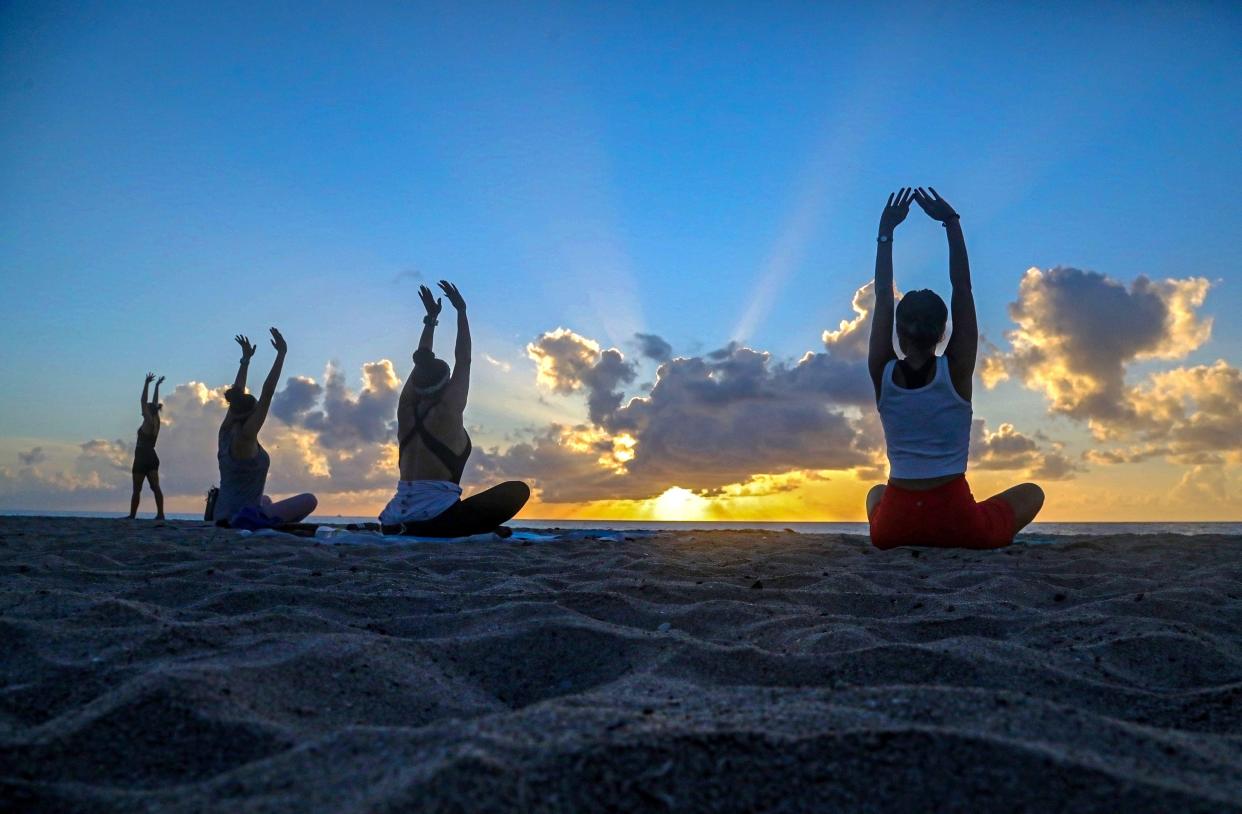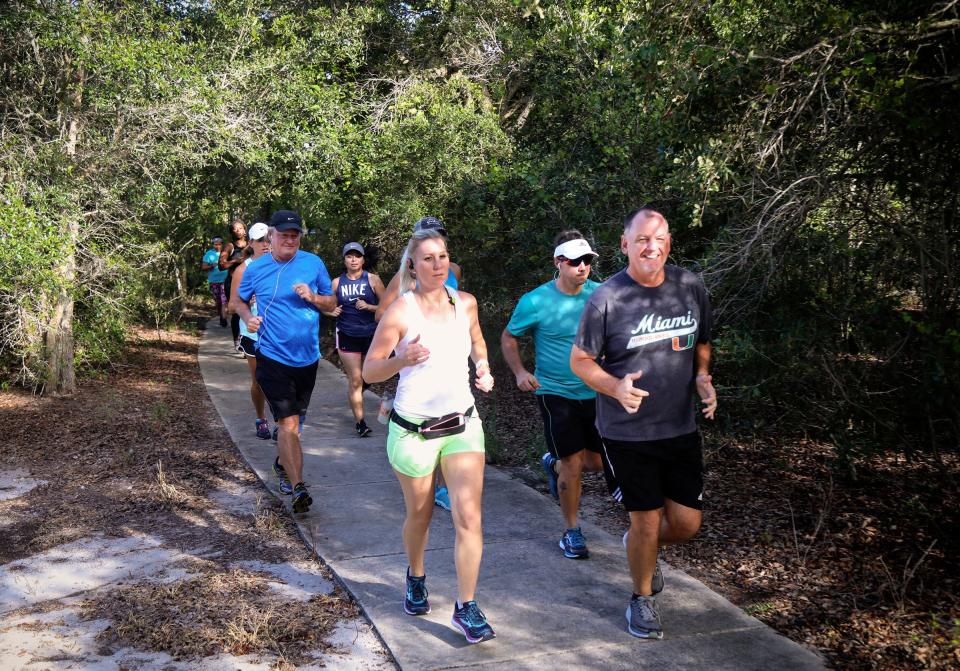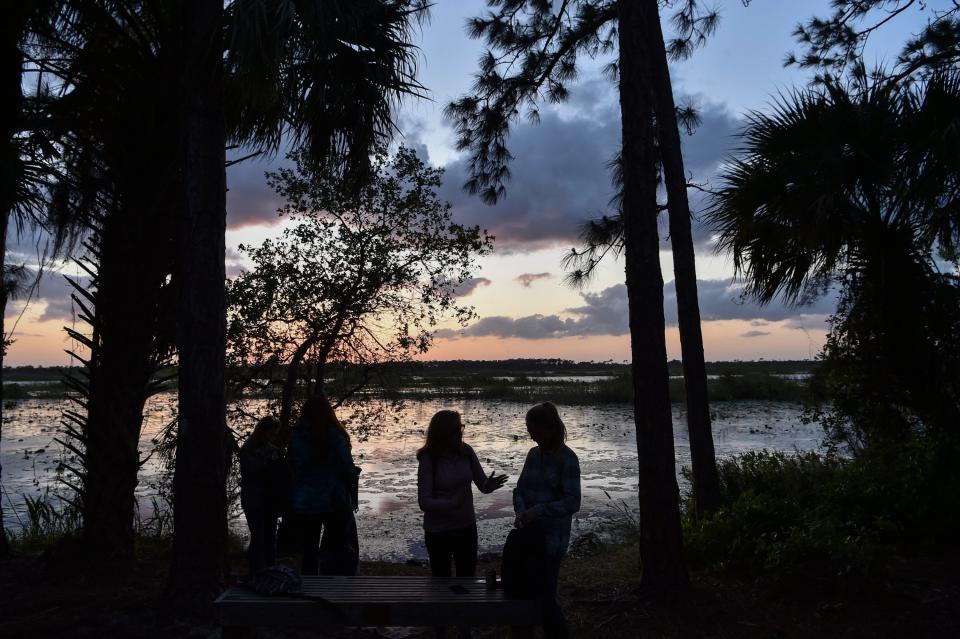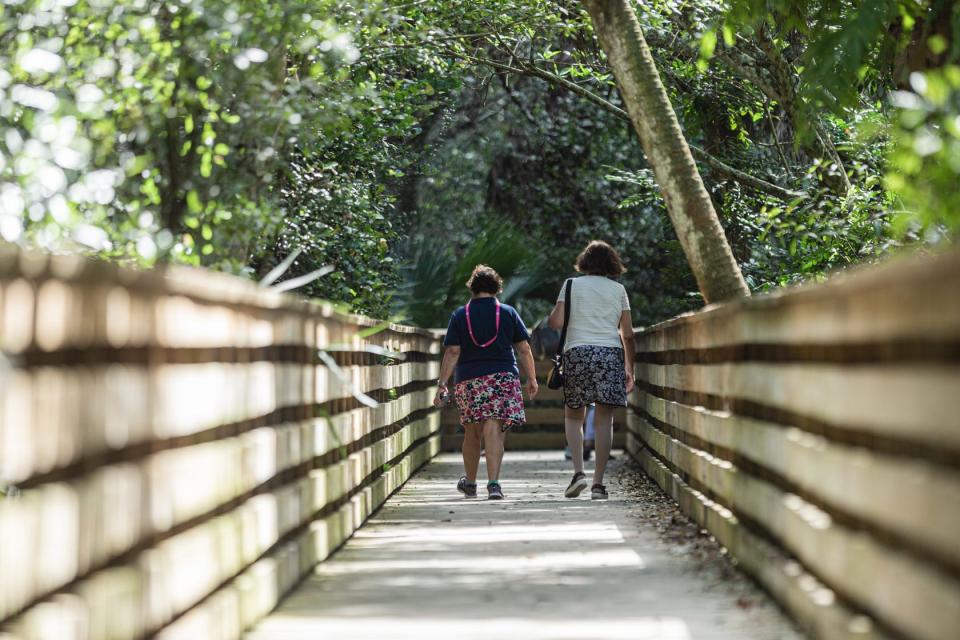Ecotherapy: How being in nature boosts your physical and mental health

- Oops!Something went wrong.Please try again later.
Longtime South Floridians know the August daytime drill: Move as quickly as possible from the air-conditioned comfort of the indoors to the air-conditioned comfort of your car.
On most 90-plus-degree days, that’s the only viable strategy for tolerating our scorching tropical heat and humidity.
And with much of the U.S. enveloped by record-setting heat in recent weeks, the rest of the country has no doubt adopted similar summer habits.
However, there is a downside to this often-necessary survival strategy: It limits our time being outside — and thus benefiting from all that nature has to offer.
Summer guide to Palm Beach County beaches: Attractions, facts on each from Tequesta to Boca
Palm Beach summer guide: Summer guide: Best things to do in Palm Beach County and beyond
Take a day trip: Day trip to Hutchinson Island, Martin County: Scenic routes, wild savannas, seaside restaurants
Ecotherapy
The physical and mental health benefits of simply communing with nature can’t be overstated.
In fact, it’s so important to the human psyche to be outside for regular extended periods that there’s now a growing subsegment of the health and wellness industry devoted to the practice of “ecotherapy.”

According to the American Psychological Association, “ecotherapy is gaining traction as a means to help people tap into nature’s therapeutic powers.”
Likewise, NBC News reported that in recent years physicians nationwide have taken to writing actual prescriptions for their patients to spend more time outdoors in local parks and green spaces.
They’ll often make these written recommendations in lieu of prescribing antidepressants or anti-anxiety medications.
There’s even a nationwide initiative dedicated to the cause: ParkRx.org.
The ParkRx website explains that “Park Prescription programs can be as diverse as the communities for which they are designed and they often include collaboration between park and public land agencies, healthcare providers, and community partners.”
The organization — which boasts dozens of physicians among its members — also notes “there are currently more than 400 studies that demonstrate the numerous health benefits that nature provides.”
Many of today’s ecotherapy advocates consider author Richard Louv the forefather of the current movement. Louv’s 2005 book “Last Child in the Woods” highlighted what he termed “nature-deficit disorder” in the youth of America.
Backed by copious research, Louv argued the new millennium’s digitally connected world had disconnected children from the “direct exposure to nature [that] is essential for healthy childhood development and for the physical and emotional health of children and adults.”

He followed that up with 2012’s “The Nature Principle” — which contended that people of all ages are vulnerable to the negative effects of nature-deficit disorder unless a conscious effort is made to be outside more.
Bringing the benefits of nature inside
Be it because of the weather or a busy schedule, if you and your family aren’t spending enough time outdoors, there are ways to bring nature — and its accompanying benefits — inside your home.
“Nature calms us, reducing feelings of stress, anxiety, and anger,” says Sandi Schwartz, founder of the Ecohappines Project and author of Finding Ecohappiness: Fun Nature Activities to Help Your Kids Feel Happier and Calmer. “It also improves focus and attention, as well as reduces blood pressure, heart rate, muscle tension, and the production of stress hormones. It even makes us friendlier and more apt to reach out to others in our community.”
Here are some of her suggestions for bringing nature inside your home via sights, sounds and greenery:

Imagery of nature. “Just looking at pictures of nature scenes can make us feel similar to actually spending time outdoors,” she says. A recent study published in the International Journal of Environmental Research and Public Health found that you can reduce stress by simply looking at images of nature. When participants viewed pictures of natural scenes, their stress level decreased because their parasympathetic nervous system was activated.
Sounds of nature. “Listening to nature can help relax us and improve our mood,” explains Schwartz. “The best sounds are those that give a sense of natural space and mimic the biorhythms of an ecosystem — like the slow, rhythmic whooshing noises of water.”
She noted that one study found that people who listened to ocean waves had considerably lower muscle tension, heart rates, and stress than those who listened to music by Mozart or sat in silence.
Plants. Flowers, potted plants and trees have long been known to elevate people’s moods, whether they realized it or not. Schwartz cites the “research done in hospitals, offices and schools that has consistently found that even a small plant in a room can significantly reduce stress and anxiety, and boost healing.”
What’s more, an often-cited study from a Pennsylvania hospital published in 1984 suggested that, all other factors being equal, surgical patients whose rooms had a view of trees recovered more quickly — and were discharged a day sooner — than patients whose rooms had a view of a wall. In the decades since, most new-hospital construction has factored green space sightlines and access into the design.
Among Schwartz’s other suggestions for bringing the benefits of nature indoors:
Visit indoor sanctuaries of nature such as an arboretum, butterfly garden, botanical garden, greenhouse, science museum, or aquarium.
Start an indoor garden of herbs and flowers.
Watch nature shows, movies, and documentaries as a family.
Play nature sounds in your home, especially at bedtime.
Try out some virtual reality with a nature theme.
Engage in nature-related creative arts projects like nature collages or putting together a slideshow of nature photographs you have taken.
So be sure to get your daily dose(s) of nature — whether you leave your home or not.
This article originally appeared on Palm Beach Post: Mental health boost: Time outdoors helps emotional well-being

